The 7 Best Herbs to Smoke: A Complete Guide to Natural Tobacco Alternatives

At Sacred Plant Co, we've spent years studying the art of herbal smoking blends. The practice of smoking herbs predates tobacco use in many cultures, with archaeological evidence showing humans have burned and inhaled botanical materials for ceremony, medicine, and pleasure for thousands of years. Today, people seek alternatives to tobacco for numerous reasons: reducing nicotine dependence, exploring traditional practices, or simply enjoying the ritual of smoking without commercial cigarette additives.
This guide explores seven time-tested smokable herbs, each with distinct properties and historical uses. We'll cover their traditional applications, flavor profiles, preparation methods, and safety considerations. Whether you're crafting a ceremonial blend or seeking a tobacco substitute, understanding these botanicals helps you make informed choices.
What Makes an Herb Safe and Suitable for Smoking?
Not every plant belongs in a smoking blend. We evaluate smokable herbs based on several criteria: historical use across cultures, lack of known toxic compounds when combusted, smoothness when inhaled, and traditional documentation of safety. The herbs in this guide have centuries of ethnobotanical records and, when sourced properly, contain no additives or pesticides.
Key safety factors include:
- Absence of toxic alkaloids that become harmful when burned
- Low resin content that might irritate airways
- Proper drying and curing to prevent mold or bacterial growth
- Clean sourcing free from chemical treatments
- Traditional documentation spanning multiple generations
The combustion process changes plant chemistry. Some compounds become more bioavailable, while others break down into different molecules. This is why herbs safe for tea or tincture aren't automatically safe for smoking. We recommend working with reputable suppliers who test for contaminants and can verify botanical identity.
The 7 Essential Smoking Herbs (Detailed Breakdown)
1. Mullein Leaf (Verbascum thapsus)
Traditional role: Respiratory support herb and base material
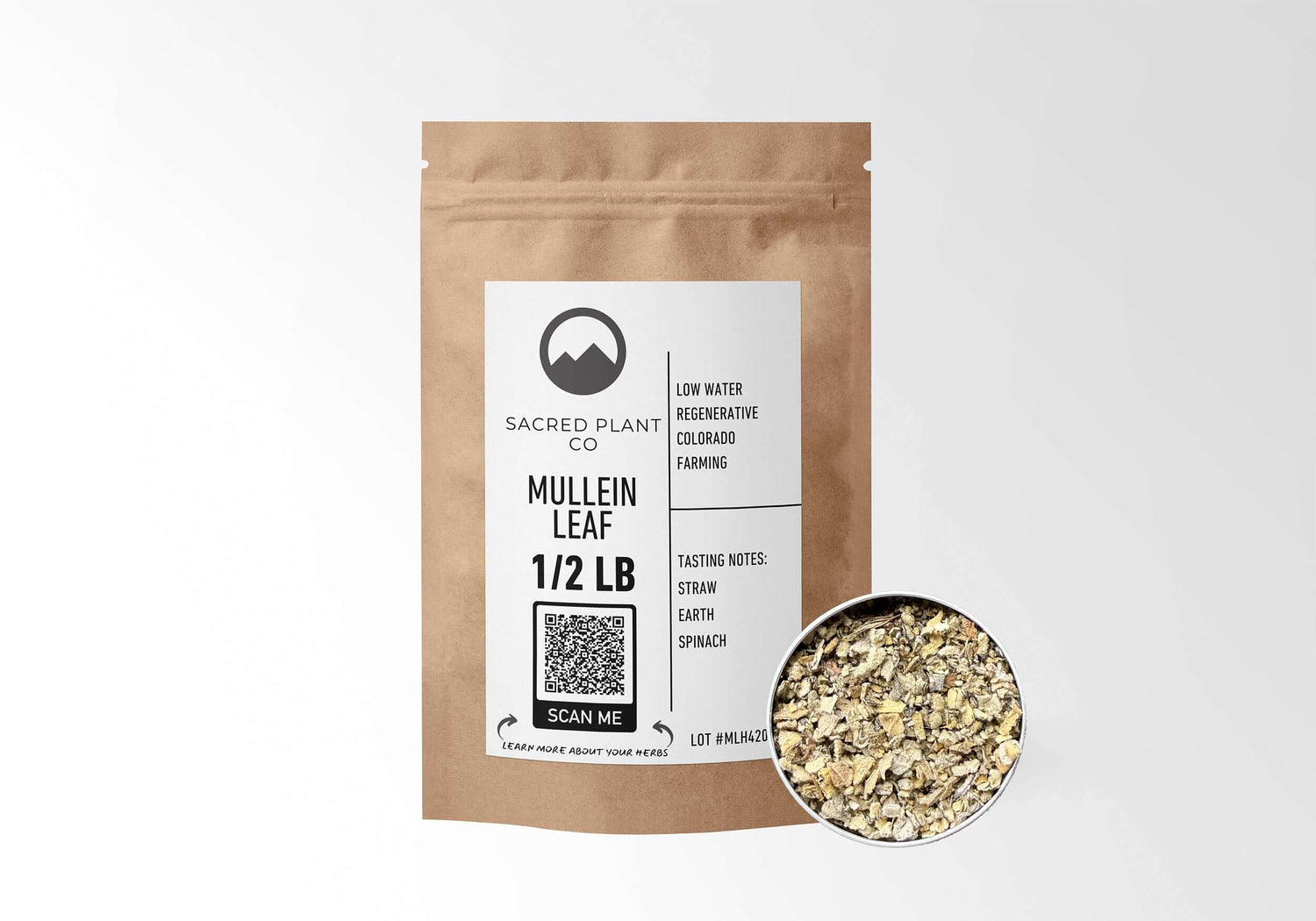
Mullein stands as the foundation of most herbal smoking blends. European and North American herbalists have used mullein leaf for respiratory complaints for centuries, and its role in smoking blends capitalizes on this traditional association. The large, soft leaves produce a light, smooth smoke with minimal harshness.
Flavor profile: Mild, slightly earthy, neutral base that doesn't overpower other herbs
Why it works: Mullein's low resin content and high mucilage create a gentle smoking experience. The leaf structure burns evenly at moderate temperatures. Traditional herbalists valued mullein for lung health, though smoking any material involves inhaling combustion byproducts.
Preparation: Remove thick stems and central veins. Crumble dried leaves to a fluffy, medium consistency. Mix as 40-60% of your base blend.
2. Damiana (Turnera diffusa)
Traditional role: Mood elevation and relaxation herb

Indigenous communities in Mexico and Central America have used damiana for centuries, both as a tea and smoking herb. The Maya and Aztec peoples incorporated it into ceremonies and traditional medicine. Damiana gained attention in the 1970s as researchers documented its traditional uses, though scientific study remains limited.
Flavor profile: Slightly spicy, warm, with subtle bitter notes reminiscent of chamomile and fig
Why it works: Damiana contains flavonoids and volatile oils that produce a mildly uplifting sensation. Users report gentle relaxation without sedation. The herb burns cleanly and blends well with floral or minty herbs.
Preparation: Use the small leaves and flowering tops. Crush to a fine-medium consistency. Incorporate as 15-25% of your blend for noticeable effects without overwhelming other flavors.
3. Lavender (Lavandula angustifolia)
Traditional role: Calming aromatic and flavor modifier
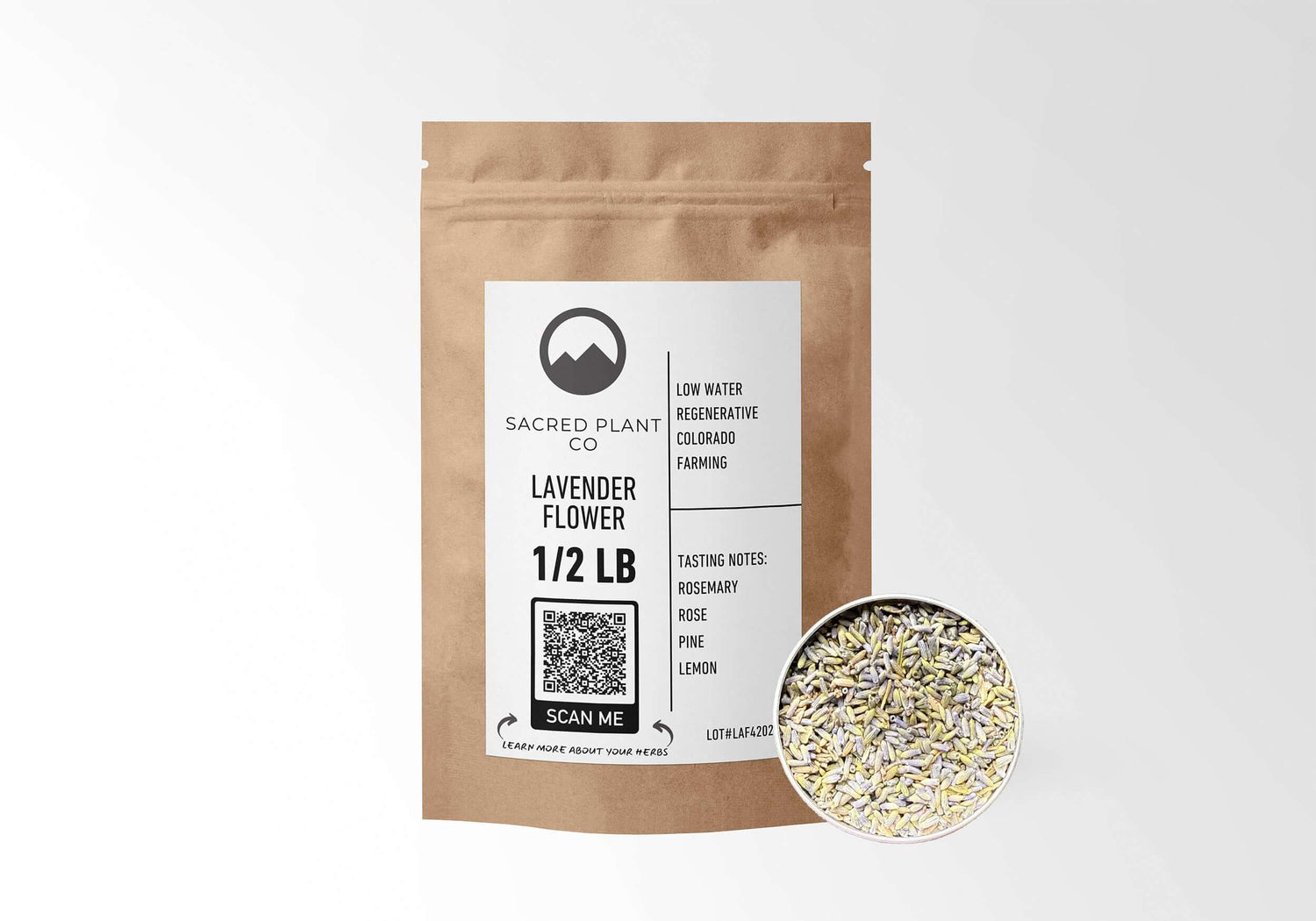
Lavender's history spans ancient Egypt, Greece, and Rome, where it perfumed baths and was burned ceremonially. Medieval Europeans incorporated lavender into "sleep pillows" and early smoking blends. The essential oil contains linalool and linalyl acetate, compounds studied for their calming properties.
Flavor profile: Floral, sweet, slightly mentholated with perfume-like overtones
Why it works: The aromatic compounds in lavender create a soothing sensory experience. The smoke carries a distinct floral note that masks harsher herbal flavors. Many users report feeling relaxed after smoking lavender blends, though individual responses vary.
Preparation: Use only the flower buds, removed from stems. Lavender is potent; start with 5-10% of your blend. Too much creates an overpowering, almost soapy taste. Crush buds gently to release oils without creating powder.
4. Peppermint (Mentha × piperita)
Traditional role: Cooling agent and respiratory comfort herb

Peppermint has been cultivated since ancient times, with documented use in Egyptian, Greek, and Roman medicine. Native American tribes incorporated wild mint species into smoking blends long before European contact. The menthol content creates a cooling sensation that many find soothing.
Flavor profile: Sharp, cooling, intensely minty with a sweet undertone
Why it works: Menthol stimulates cold-sensitive receptors in the throat and airways, creating a cooling effect without changing temperature. This sensation can make smoke feel smoother and less harsh. Peppermint also adds a pleasant taste that complements most herbal combinations.
Preparation: Remove stems; use only leaves. Crumble to a fine-medium texture. Use 10-20% for a noticeable mint presence. Peppermint can overpower delicate florals, so balance carefully.
5. Rose Petals (Rosa spp.)
Traditional role: Aromatic enhancer and heart-centered ceremonial herb

Roses hold sacred significance across Persian, Indian, and Middle Eastern cultures. Sufi mystics burned rose petals in ceremony. Victorian-era herbals mention rose in smoking blends for respiratory complaints. The petals contain multiple aromatic compounds that create a complex, luxurious smoke.
Flavor profile: Delicately floral, slightly sweet, with woody undertones
Why it works: Rose petals burn slowly and evenly, adding a smooth, refined character to blends. The aromatics create an uplifting sensory experience. Roses contain tannins and flavonoids that may contribute to the overall effect, though research remains limited.
Preparation: Use fully dried petals from pesticide-free sources. Remove any green parts (bitter when burned). Crush lightly to break up petals without pulverizing. Include 10-15% for noticeable rose character.
6. Mugwort (Artemisia vulgaris)
Traditional role: Dream enhancement and protective ceremonial herb

Mugwort has been revered across European, Asian, and Indigenous North American cultures for millennia. Ancient Romans placed mugwort in their sandals for protection during long journeys. Traditional Chinese Medicine incorporates mugwort in moxibustion. European folklore associates mugwort with dream work and divination, while Native American tribes used it ceremonially and medicinally.
Flavor profile: Herbaceous, slightly bitter, sage-like with subtle sweet undertones
Why it works: Mugwort contains thujone, a compound that may influence dream activity and create a mildly calming effect. Users report enhanced dream recall and vividness when using mugwort before sleep. The herb burns steadily with a pleasant aromatic smoke that many find grounding and centering.
Preparation: Use the dried leaves and flowering tops. Remove thick stems. Crumble to a medium-fine consistency. Mugwort works well as 15-25% of a blend. The flavor is assertive, so balance with milder herbs like mullein. For dream work, smoke a small amount 30-60 minutes before bed.
7. Marshmallow Root (Althaea officinalis)
Traditional role: Throat-soothing demulcent and binder
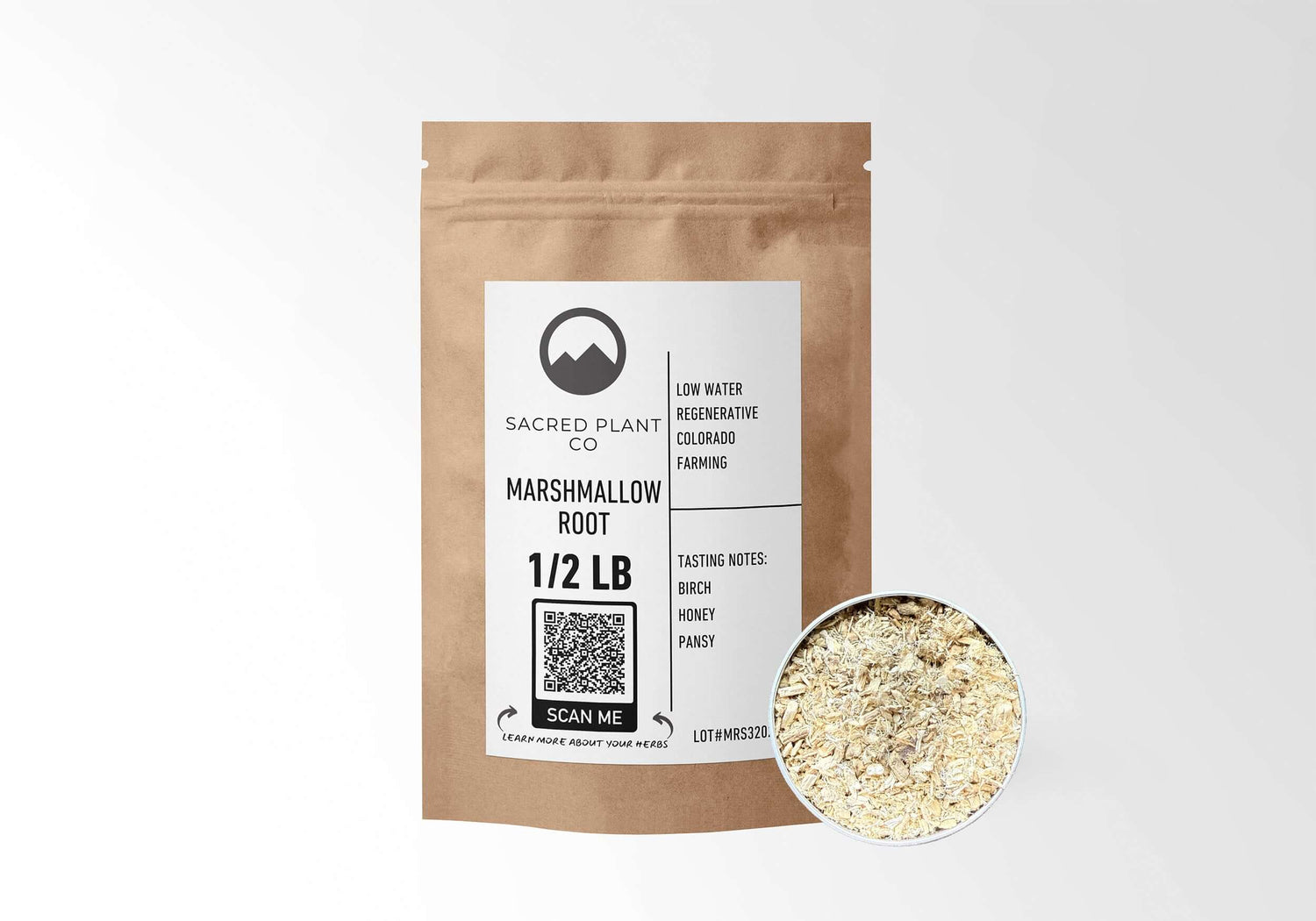
While marshmallow leaf is more commonly smoked, the root serves as an excellent addition to herbal blends when finely ground. Ancient Greek physicians including Hippocrates mentioned marshmallow for respiratory support. The root contains high levels of mucilage, which creates a protective coating.
Flavor profile: Mild, slightly sweet, earthy with a subtle woody character
Why it works: Marshmallow root's mucilage content helps bind herbal blends while contributing a smooth, mild smoke. When finely powdered, it adds body to loose blends without dominating flavor. The demulcent properties traditionally associated with marshmallow may offer a soothing sensation.
Preparation: Use finely cut or powdered root. Because root material is denser than leaves, use sparingly (5-10% of blend). Mix thoroughly with lighter leaf materials. The root burns slowly, helping extend burn time of the entire blend.
Creating Your Custom Herbal Smoking Blend
Building a balanced smoking blend requires understanding ratios, burn characteristics, and flavor interaction. At Sacred Plant Co., we recommend following a structured approach that accounts for base material, active herbs, and aromatic accents.
The Base-Active-Accent Framework
Base herbs (50-70% of blend): Mullein, raspberry leaf, or marshmallow root provide structure and smooth smoke. These burn evenly and create volume without strong flavors.
Active herbs (15-30% of blend): Damiana, blue lotus, or other herbs with noticeable effects. These define the blend's primary character and intended purpose.
Accent herbs (10-20% of blend): Lavender, peppermint, rose petals add flavor complexity and aromatic appeal. Use restraint; accents should complement, not overwhelm.
Sample Blend Recipes
Evening Relaxation Blend:
- 50% mullein leaf (base)
- 25% damiana (relaxation)
- 15% lavender (calming aromatic)
- 10% rose petals (smooth finish)
Ceremonial Blend:
- 40% mullein leaf (base)
- 30% blue lotus (ceremonial focus)
- 20% rose petals (heart-centered aromatic)
- 10% lavender (sacred scent)
Refreshing Day Blend:
- 60% mullein leaf (base)
- 20% peppermint (cooling, energizing)
- 15% damiana (mood lift)
- 5% marshmallow root (smoothness)
Blending Procedure
- Measure precisely. Use a digital scale for accuracy, especially when working with small quantities of potent herbs like lavender.
- Process individually. Grind or crumble each herb separately to your desired consistency before mixing.
- Combine in stages. Mix base herbs first, then fold in active herbs, finally add accents.
- Tumble thoroughly. Place blend in a sealed container and shake vigorously for 2-3 minutes to ensure even distribution.
- Cure before use. Let blend rest in a sealed jar for 24-48 hours. This allows flavors to marry and moisture to equalize.
Why Each Step Matters: Precise measurement ensures consistent effects and flavor. Processing herbs separately prevents cross-contamination of flavors. Staged mixing distributes potent accents evenly. Thorough tumbling prevents "hot spots" of concentrated herbs. Curing creates a more refined, cohesive smoke.
Preparation and Storage Best Practices

Proper preparation and storage directly impact smoke quality, flavor, and safety. Herbs lose potency over time, especially when exposed to light, heat, and moisture.
Drying and Moisture Content
Smokable herbs should be dry enough to crumble easily but not so desiccated they turn to dust. Target moisture content sits around 10-12%. Overly dry herbs burn too fast and hot, creating harsh smoke. Slightly moist herbs won't stay lit and may harbor mold.
If your herbs feel too moist, spread them on a clean screen or cloth in a dark, well-ventilated area for 12-24 hours. Never use heat sources like ovens or microwaves, which can destroy aromatic compounds and create uneven drying.
Storage Guidelines
- Container: Use airtight glass jars with tight-sealing lids. Mason jars work perfectly. Avoid plastic, which can impart flavors and doesn't provide sufficient moisture barrier.
- Location: Store in a cool, dark place. Light degrades many plant compounds. Ideal temperature is 60-70°F (15-21°C).
- Humidity: Keep away from bathrooms and kitchens where moisture fluctuates. Consider adding a small food-grade silica packet to each jar.
- Labeling: Mark each jar with herb name and date. Most dried herbs maintain peak quality for 6-12 months.
Signs of Degradation
Discard herbs that show any signs of mold (fuzzy growth, musty smell), discoloration (browning beyond normal oxidation), or complete loss of aroma. Fresh, properly stored herbs retain most of their scent when the container opens.
Safety Guidelines and Contraindications
Smoking any material produces combustion byproducts, including tar, carbon monoxide, and particulate matter. While herbal smoke differs chemically from tobacco smoke (particularly in nicotine content), inhaling combustion products carries inherent risks.
General Safety Principles
- Source quality: Only smoke herbs from verified, pesticide-free sources. Agricultural chemicals become especially harmful when combusted.
- Frequency: Minimize frequency and quantity. Ceremonial or occasional use differs from daily consumption in risk profile.
- Ventilation: Always smoke in well-ventilated areas. Never smoke indoors without proper airflow.
- Listen to your body: Discontinue immediately if you experience dizziness, nausea, chest tightness, or unusual reactions.
Specific Contraindications
Pregnancy and nursing: Avoid smoking any herbs. Smoke inhalation poses risks to fetal development and can pass compounds through breast milk.
Respiratory conditions: People with asthma, COPD, or other lung conditions should not smoke herbs. Consider alternatives like aromatherapy or tea.
Medication interactions: Some herbs may interact with medications. Blue lotus and damiana, for example, may interact with MAO inhibitors or SSRIs. Consult a healthcare provider if you take prescription medications.
Allergies: Test for allergies before smoking. Rub a small amount of dried herb on inner forearm. If redness or itching occurs within 24 hours, avoid that herb.
Legal Considerations
Herbal smoking blends are legal in most jurisdictions, but regulations vary. Some regions restrict blue lotus or damiana. Research local laws before purchasing or using these herbs. Never smoke herbal blends while operating vehicles or machinery.
Understanding Effects and Expectations
Individual responses to smokable herbs vary widely. Factors include body chemistry, tolerance, quality of herbs, blend ratios, and set and setting. Some people experience noticeable effects from damiana or blue lotus; others report only subtle relaxation.
Set reasonable expectations. Herbal smoking blends typically produce gentler effects than pharmaceutical substances or even cannabis. Most people describe the experience as mildly relaxing, aromatic, or ceremonially meaningful rather than intensely psychoactive.
Time Course of Effects
Effects typically begin within 5-15 minutes of smoking and peak around 20-30 minutes. Duration varies by herb and individual, generally lasting 1-2 hours. Blue lotus tends to have the most noticeable and longest-lasting effects in this group.
Enhancing the Experience
Ritual and intention shape the experience significantly. Create a calm environment. Consider your purpose (relaxation, ceremony, tobacco replacement). Use quality tools (clean pipe, proper papers). Practice mindful smoking rather than rushing through the process.
Frequently Asked Questions
- Can I smoke these herbs if I'm trying to quit tobacco?
- Many people use herbal smoking blends as part of tobacco cessation. These herbs contain no nicotine, so they don't reinforce nicotine addiction. However, they maintain the ritual and hand-to-mouth habit, which can ease the psychological aspects of quitting. We recommend using herbal blends as a transitional tool while working toward completely stopping smoking for best health outcomes.
- How do I know if my herbs are high quality?
- High-quality smokable herbs should have a strong color, distinct aroma characteristic of the plant, no visible mold or debris, and preferably come from suppliers who provide testing certificates. At Sacred Plant Co., our herbs are sourced from verified growers and tested for contaminants. Quality herbs cost more but provide superior flavor, effects, and safety.
- Can I use these herbs in a vaporizer instead of smoking them?
- Yes, many dry herb vaporizers work well
- How long do blended herbs stay fresh?
- When stored properly in airtight glass containers away from light and heat, most herbal blends maintain quality for 6-8 months. Individual herbs stored separately last longer (up to 12 months). Blends lose potency faster because mixing increases surface area exposed to air. If your blend loses aroma or develops off-odors, it's past peak quality. Always cure fresh blends for 24-48 hours before judging aroma or flavor.
- Are there any herbs I should absolutely avoid smoking?
- Never smoke herbs from unknown sources or plants you cannot identify with certainty. Avoid poisonous plants like oleander, foxglove, or rhododendron. Many common houseplants and garden ornamentals are toxic when burned. Stick to herbs with documented traditional use as smoking materials. If you experience any adverse reactions, discontinue immediately and seek medical attention if symptoms persist.
- Can I add essential oils to my smoking blend for extra flavor?
- No. Never add essential oils or any liquids to smoking blends. Essential oils are highly concentrated and can be toxic when combusted. They also create excessive smoke and harsh, chemical-tasting burns. If you want to enhance flavor, add more aromatic herbs like lavender or peppermint instead. All flavoring should come from the plant material itself.
- What's the best way to smoke herbal blends: pipe, papers, or something else?
- Each method has advantages. Glass pipes offer clean flavor and no paper taste, plus they're reusable. Rolling papers work well for portable use; choose unbleached, additive-free papers. Avoid flavored papers which add chemicals. Water pipes cool smoke but may filter out some aromatic compounds. For beginners, we recommend a small glass pipe, which provides control and allows you to gauge effects easily.
Why Sacred Plant Co. for Your Herbal Smoking Journey
We source every herb with the same care we'd use for ourselves. Our suppliers practice regenerative harvesting, our facilities maintain strict quality protocols, and we test regularly for contaminants. When you choose Sacred Plant Co., you receive herbs at peak potency, properly dried and stored, ready to blend or use immediately.
Whether you're crafting your first ceremonial blend or refining a personal recipe you've developed over years, we provide the foundation materials you need. Each herb arrives with complete botanical information, suggested uses, and safety guidelines.
Ready to create your custom herbal smoking blend? Browse our complete selection of smokable herbs, all tested for purity and sourced from sustainable growers. We offer individual herbs and curated starter sets for those new to herbal blending. Shop Smokable Herbs →
Safety & Disclaimer
Smoking any material produces combustion byproducts and carries health risks. The information in this article is for educational purposes and does not constitute medical advice. These statements have not been evaluated by the FDA. Our products are not intended to diagnose, treat, cure, or prevent any disease. Consult a qualified healthcare provider before using smokable herbs, especially if you are pregnant, nursing, taking medications, or have pre-existing health conditions. Individual responses vary; discontinue use if you experience adverse reactions. Keep all herbs away from children and pets.



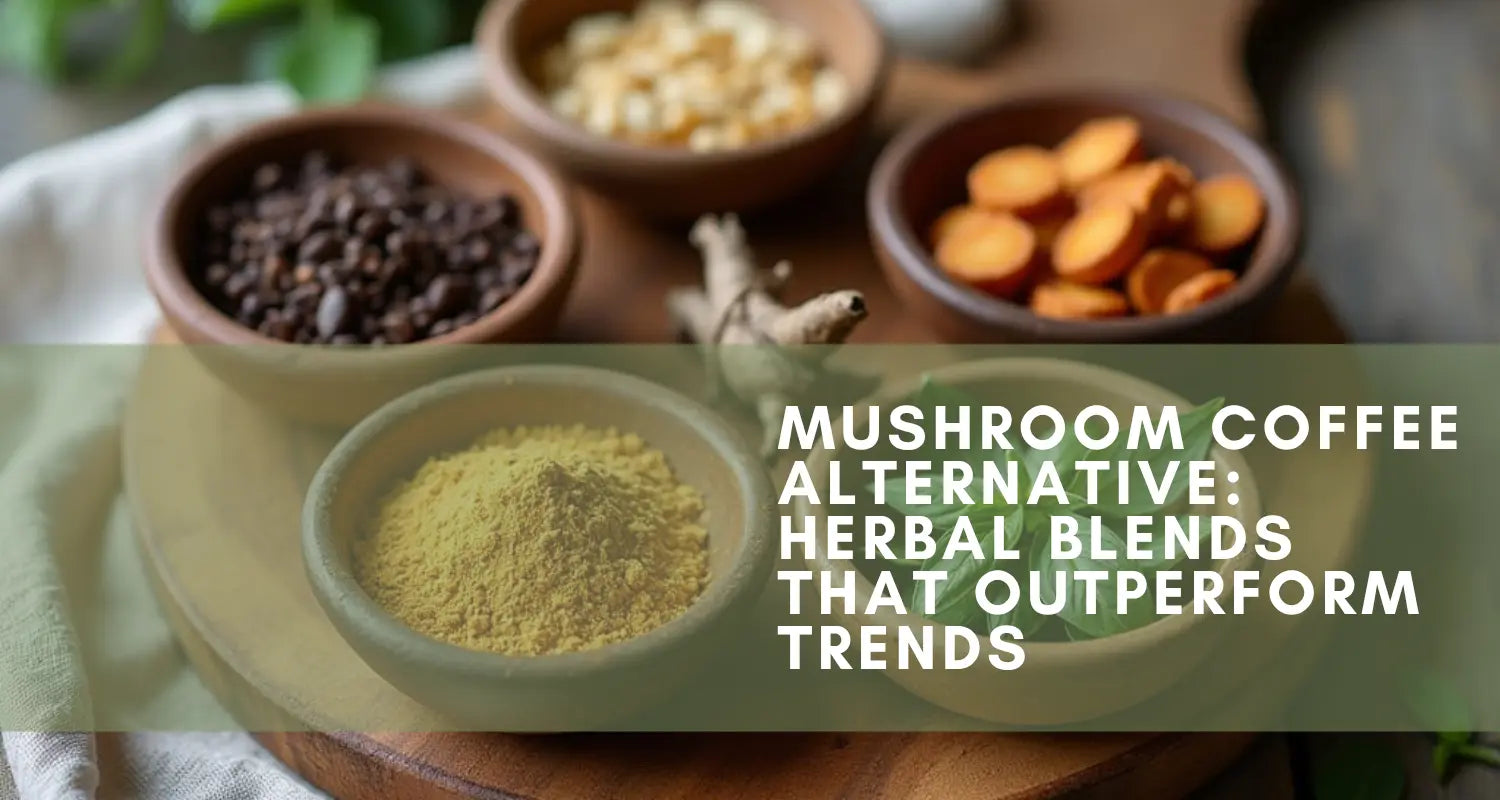
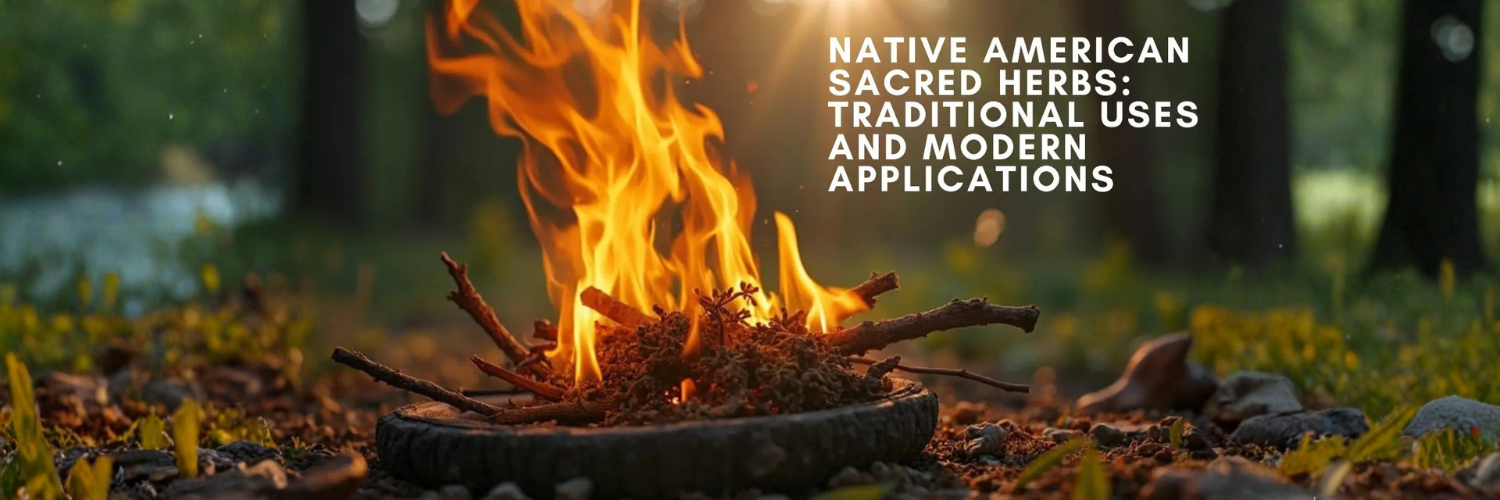

1 comment
Where can I purchase